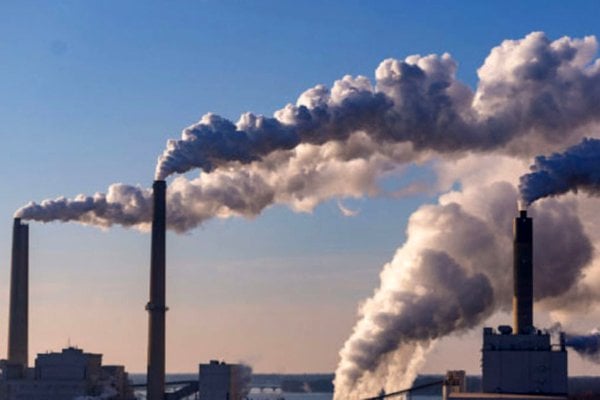We must reduce carbon emissions

What you need to know:
- Human activities are already having widespread effects on the environment: glaciers and ice sheets are shrinking, river and lake ice is breaking up earlier, plant and animal geographic ranges are shifting, and plants and trees are blooming sooner.
Since the 1800s the earth has been gradually experiencing shifts in temperatures and weather patterns. Many natural and anthropogenic factors could have contributed to these changes.
The magnitude of changes occurring to the climate now is of great concern worldwide. The average concentration of carbon dioxide (CO2) measured at the Mauna Loa Observatory in Hawaii has risen from 316ppm in 1959 to more than 411ppm in 2020.
Similar rates of increase have since been recorded at many other stations globally. Since the pre-industrial era, the atmospheric concentration of CO2 has increased by over 40 percent, methane has increased by more than 150 percent, and nitrous oxide has increased by roughly 20 percent.
More than half of the increase in CO2 has occurred since 1970. Increases in all three gases contribute to the warming of the earth, with the increase in CO2 playing the largest role (IPCC 2021, Climate Change 2021).
Greenhouse gases are altering the earth’s energy balance and climate. Human activities have greatly increased greenhouse gases in the atmosphere over the past decades, leading to more heat retention and a steady increase in surface temperatures.
The atmospheric aerosols alter the climate by scattering and absorbing solar and infrared radiation and they may also change the microphysical and chemical components of clouds.
Human activities are already having widespread effects on the environment: glaciers and ice sheets are shrinking, river and lake ice is breaking up earlier, plant and animal geographic ranges are shifting, and plants and trees are blooming sooner. Some effects that scientists had long predicted would result from global climate change are now occurring, such as sea ice loss, accelerated sea level rise, and longer, more intense heat waves as recorded throughout Europe during this year’s summer. Some of these changes are irreversible at least over the next few decades.
The drought that has crippled economic activities in southwestern China, illustrates the kind of disruption that climate change could wreak on global supply chains.
Chinese factories were shuttered again in late August, thereby freezing the international supply chains for automobiles, electronics, and other goods.
Such interruptions might soon become more frequent for companies that source parts and products from around the world as climate change and extreme weather events continue to disrupt the global delivery system for goods in highly unpredictable ways.
According to experts, global temperatures will continue to rise for many decades, mainly due to greenhouse gases produced by human activities. The severity of the effects of climate change will depend on the path of future human activities. More greenhouse gas emissions will lead to more climate extreme and widespread damaging effects across the planet. However, those future effects depend on the total amount of carbon dioxide we emit. So, if we can reduce emissions, we may avoid some of the worst effects.
Globally, climate change has triggered displacements and worsened the living conditions of many citizens. The most recent examples include the landslides and flooding in the Mount Elgon region, the flooding in Karachi province, Pakistan, and the drought in the Karamoja region.
Limited natural resources like fresh water are becoming even more scarce in many parts of the world. Crops and livestock are struggling to survive.
Climate change is posing a threat multiplier, exacerbating existing tensions and adding to the potential for conflicts in many areas.
Climate change is already here, we can only limit further warming and the dangers it poses to the inhabitants of this planet if we act now. Our actions between 2022 and 2035 shall determine if we can slow the warming enough to avoid climate change’s worst impacts. We should drastically cut down emissions to remove some carbon from the atmosphere. Fortunately, plants naturally absorb and store carbon. By protecting natural habitats and carefully managing farmland and forests, we can store millions of tonnes of this living carbon.
In conclusion, I must recommend we make a drastic shift to planet-friendly food systems because healthy soils have enormous potential to store carbon. We should maximise nature’s ability to store carbon by conserving forests and wetlands, adding regenerative practices to agriculture, and planting trees.
By doing so, we are unleashing nature’s full potential to stabilise the climate.
Lastly, it’s important that we promote smart clean energy policies by advancing policies that grow clean energy, boost energy efficiency, modernise electric grids and advance battery storage technology.
Samuel Obedgiu.
Agricultural Scientist and Environmental Activist




